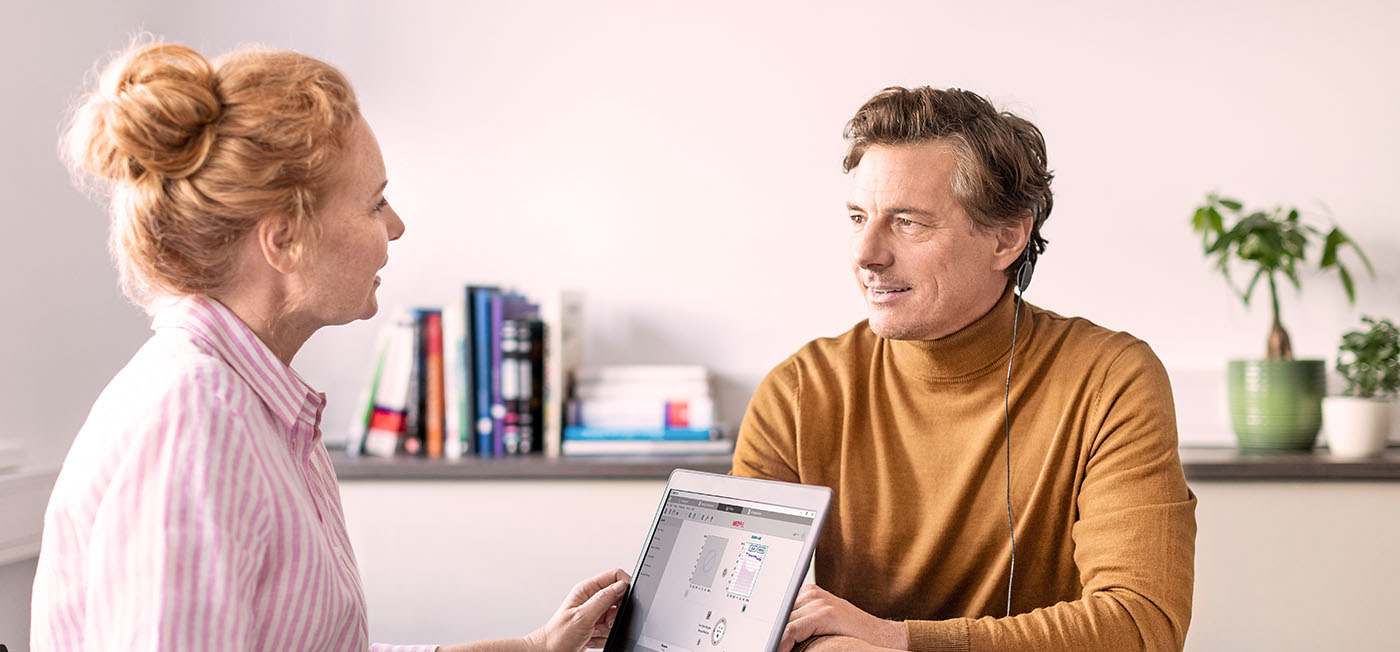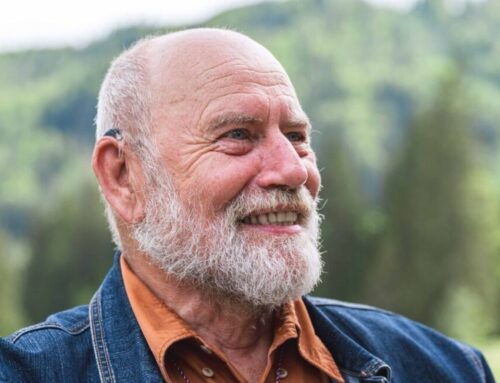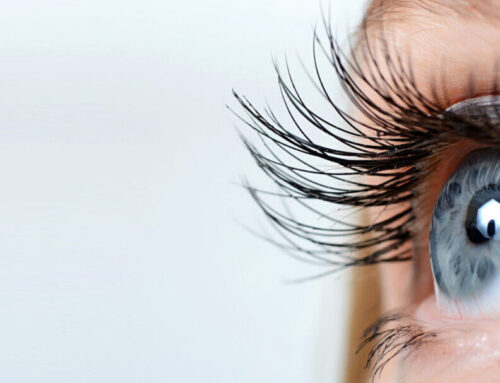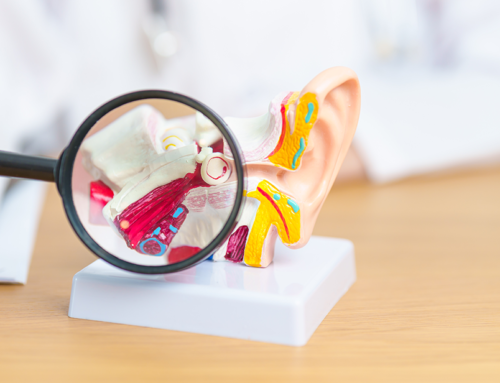New MED-EL Cochlear Implant Program for Better Sound Fidelity
In 2020, MED-EL – along with other new products– introduced a new program for cochlear implants: the program for fitting MAESTRO 9.0. The settings for cochlear implant systems can be made with it according to the individual anatomy of the user, which further improves the sound fidelity of these systems.

Sound fidelity with the new fitting program for MED-EL cochlear implants
Many studies have shown it: the more natural the sound impression of a cochlear implant is, the faster hearing results and the better the speech understanding that can be ultimately achieved with this system. Enjoyment of music and the ability to locate the source of sounds also increases with the sound fidelity. The sound fidelity of the cochlear implant system is important, especially for those cochlear implant users who use a hearing aid on the other side or who hear naturally, to be able to implement the hearing impressions of both sides optimally with the least cognitive effort.
This sound fidelity is made possible by the lowest possible “Location-Frequency-Mismatch”, as the experts call it: the individual components of the sound must be stimulated in the inner ear precisely where each sound would be heard naturally. The stimulation signal should generate as natural a nerve signal as possible.
To further improve the sound fidelity of their cochlear implant systems, MED-EL has introduced anatomically based fitting, or ABF, for the current system. In this, the location of the individual electrode contacts in the cochlear is defined, the naturally occurring pitches located there are determined, and the corresponding contact assigned.
The basis for ABF is the result of computer tomography, which is often carried out as a check after the implantation. It is analysed with the otological planning software OTOPLAN, developed by the Swiss company CAScination in cooperation with MED-EL, transferred to the fitting program MAESTRO 9.0 and passed over to the individual settings of the cochlear implant audio processor.
Better assignment of the frequency in the cochlear implant
Previously, pitches were divided according to a logarithmic key to the individual channels of the cochlear implant and thus to the individual contacts of the active electrodes. In this way, a true sound assignment can be achieved if an electrode with an optimally adjusted length can be inserted completely into an average cochlear; that is, if stimulation over nearly two coils or 630 degrees can be achieved. Fine structure signal coding – FSP, FS4 or FS4-p-coding – in the second coil perfects the pitch impression.
Using the CT image, that is one of the routine examinations in cochlear implantation and with OTOPLAN, a special DICOM viewer, the clinician can also determine the ideal electrode length for non-average inner ears with a few clicks. On the one hand, conventional frequency allocation is only contingently correct for these users. On the other hand, for individual users with especially large cochlear and especially deep insertion, the contact allocation of lower frequencies is excellent, but the medium and high sound range is only partially correctly allocated.
“If we know where exactly in the cochlear each electrode is located, we can allocate the exact correct frequency range to each individual contact for each individual user”, explains Peter Nopp, Director of Development in the area of signal coding at MED-EL. Precisely that is now possible with the latest version of OTOPLAN using a post-operative CT-image. “OTOPLAN recognises at the push of a button the actual location of each channel and the frequency located there.”
It would also be possible to see with OTOPLAN if electrodes were not completely inserted so that one or several channels were outside the cochlear and should therefore be deactivated.
Anatomy Based Fitting (ABF) for Cochlear Implants with MAESTRO 9.0
The new version of MAESTRO can take on this information from OTOPLAN. Nopp explains the following procedure: “We shift the frequency bands in the setting to minimise the differences between allocated and located frequencies.” That is possible for users of all types of MED-EL CIs in combination with the SONNET 2 or RONDO 3 audio processors.
However, there can still be differences with short electrodes or incomplete insertion: the shorter the covered range of the cochlear, the greater the difference, especially for low frequencies. Therefore, a requirement for good fitting with ABF is that the electrode reaches at least into the second coil of the cochlear.
ABF aims primarily at frequencies in the range 1000 to 3000 Hertz, as these are crucial to understanding speech. ABF has no effect on the level setting, although some frequency bands in the low frequency ranges can turn out wider than with conventional, logarithmic frequency distribution: combination with Fine Hearing signal coding FSP, FS4 or FS4-p allowed good pitch resolution there too.
Of course, it must be considered whether experienced cochlear implant users wish to have their settings adjusted according to ABF. With over 30 years of experience in the area of CIs, Peter Nopp points out that “experienced users have got used to the settings of the frequency bands.” He advises that a long adjustment phase may need to be assumed. “For new users though, we believe that we can achieve faster familiarisation with hearing with a cochlear implant using anatomy based fitting ABF, and thus better use of the system overall.”
Provisional high point of the long development of cochlear implants
MED-EL has always tried to enable as natural a hearing impression as possible with its cochlear implant systems – always based on current scientific knowledge of the hearing process. The first such recognition was that of the Hungarian biophysicist and Nobel Prize winner Georg von Bérkésy, that different sound pitches stimulate different areas of the cochlear: higher sounds the so-called basis near transition from the middle ear to the inner ear, deeper sounds by contrast towards the tip of the cochlear, called the apex. Building on that, Donald D. Greenwood derived a mathematical function from the results of psycho-acoustic experiments on differentiation of pitch in 1961, which calculates the place in the inner ear responsible for a certain frequency range. This relationship was applied in the earliest multi-channel cochlear implants.
As these first cochlear implants only used relatively short electrodes, only frequencies above 500Hertz were initially stimulated in the cochlear. However, as early as 1994, MED-EL introduced the first cochlear implant with electrodes 31mm long, which can reach and stimulate the entire length of the cochlear. This function was later designated CCC, standing for “Complete Cochlear Coverage”.
In natural hearing, the processes from the second coil of the cochlear are even more complex: sounds here are also chronologically broken down by the stimulation rhythm. A sound of 110 Hertz triggers 110 packets of action potential in the auditory nerve every second, a sound with a frequency of 440 Hertz triggers 440 packages. MED-EL cochlear implants with FineHearing technology have been offering exclusive coding strategies imitating this mechanism since 2006.
For a long time, it has only been possible to show the exact location of the electrode in the cochlear and the difference of the individual cochlear from a typically formed one by imaging diagnosis, but it has not been possible to include these in the settings. The individual cochlear can be measured and the ideal electrode length sought before the operation with OTOPLAN. The latest version of OTOPLAN can also measure the exact location of the individual contacts following the implantation and allocate the corresponding pitches; the new MAESTRO 9.0 program for cochlear implants can take over this allocation for anatomy-based fitting of the SONNET 2 and RONDO 3 audio processors.
Further improvements in the new program for the MED-EL cochlear implant MAESTRO 9.0
More than 70 changes have been implemented in the new MAESTRO 9.0 fitting program: improved processes or clearer representations– most of them primarily helpful to specialists working directly with the program. Some innovations though are direct improvements for cochlear implant users themselves. One is a new test possibility of the microphone of the SONNET 2 and RONDO 3: in every fitting appointment, a check can be made of whether the two microphones in the audio processor are working well and equally. This is important for young cochlear implant users who cannot address changes in hearing so well. Comparison of the two microphones ensures that the sound pick-up is still focused in the right direction.
In direct audio input (DAI), also used in FM systems, and in the telecoil for pick-up of audio signals via induction, additional setting options enable improved comparison of the two audio inputs with each other. The new RONDO 3 audio processor is fitted with an inbuilt battery: it can be tested with the MAESTRO 9.0. This means a service appointment can be agreed before reduced function duration affects the user’s everyday life.
The audio processors themselves contain a processor, a “mini computer”. Through small changes to the programming of this processor, future knowledge and improvements can be also used from time to time with processors already in service. For SONNET 2 and RONDO 3, MAESTRO 9.0 offers the possibility of simply updating at the next fitting appointment– with other processors that is, as before, possible in the course of a technical service.
However, the most extensive further developments that became available with the MAESTRO 9.0 are the possibility of anatomy-based fitting (ABF) and bimodal fitting.
You can find more information about the new program for MED-EL cochlear implants at www.medel.com.







